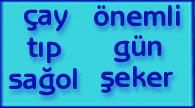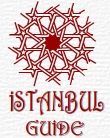The story of the Turkish Language from the Ottoman Empire until today
During the Ottoman Empire (1453~1920), the Turks were one of many linguistic and ethnic groups living in Turkey. There were 3 languages used at that time: Arabic which was used as the primary language of religion; Persian which was the language of art, refined literature, and diplomacy; and at the official level, the Ottoman Turkish that was used only for the administration of the empire. Members of the civil, military, and religious elite talked and conducted their business in Ottoman Turkish, which was a mixture of Arabic, Persian, and Turkish. Ottoman Turkish not only borrowed vocabulary from Arabic and Persian but also lifted entire expressions and syntactic structures out of these languages and incorporated them into the Ottoman idiom.
The multiple linguistic influences on Ottoman Turkish caused difficulties in spelling and writing. Turkish, Persian, and Arabic belong to 3 different language families: Ural-Altaic, Indo-European and Semitic, respectively. Phonological, grammatical, and etymological principles are quite different among the 3 families. For these reasons, during the 19th century intellectuals began to call for a reform of the language. They wanted a language that would be easier to read and write and contain more purely Turkish words.

With the establishment of the republic, Ataturk made language reform an important part of the nationalist program. His goal was to produce a language that was more Turkish and less Arabic, Persian, and Islamic; one language that was more modern, practical, precise and less difficult to learn. He wanted a drastic alteration of both spoken and written language. This process was accomplished to adoption of a new alphabet and purification of the vocabulary. The language revolution began officially in May 1928, when numbers written in Arabic were replaced with their Western equivalents. Then a Turkish new Latin alphabet was approved. This transition last only a few months. On January 1, 1929, it became unlawful to use the Arabic alphabet to write Turkish.
|
The new Latin alphabet represented the Turkish vowels and consonants more clearly than the Arabic alphabet. One symbol was used for each sound of standard Turkish. The phonetically designed alphabet based on the Latin script facilitated the quick acquisition of literacy (Please have a look at the pictures on this page containing Turkish words and some Turkish characters).
| | By replacing the Arabic with the Latin alphabet, Turkey turned consciously toward the West and effectively severed a major link with a part of its Islamic heritage. By providing the new generation no need or opportunity to learn Arabic letters, the alphabet reform cut it off from Turkey's Ottoman past, culture, value system and religion. | By the late 1940s, considerable opposition to the purification language movement had emerged. Teachers, writers, poets, journalists, editors, and others began to complain publicly about the instability and arbitrariness of the officially sanctioned vocabulary. In 1950 the Turkish Language Society lost its semiofficial status. Eventually, some Arabic and Persian loan-words began to reappear in government publications. The cost of language reform, however, has been a drastic and permanent estrangement from the literary and linguistic heritage of the Ottomans. Although some prerepublican writings have been transliterated into the new alphabet, the vocabulary and syntax are barely understandable to a speaker of modern Turkish.
Articles' Index
Read more articles about the Turkish language and related subjects:
Turkish Courses and dictionaries
Turkish Proverbs
Body language in Turkey
Learning Turkish
Hope you enjoyed our article! Thank you for visiting our site !
Please write your suggestion for an article to : istanbul gmx.co.uk gmx.co.uk
PRIVATE GUIDE
IN ISTANBUL

|
|




 gmx.co.uk
gmx.co.uk 




